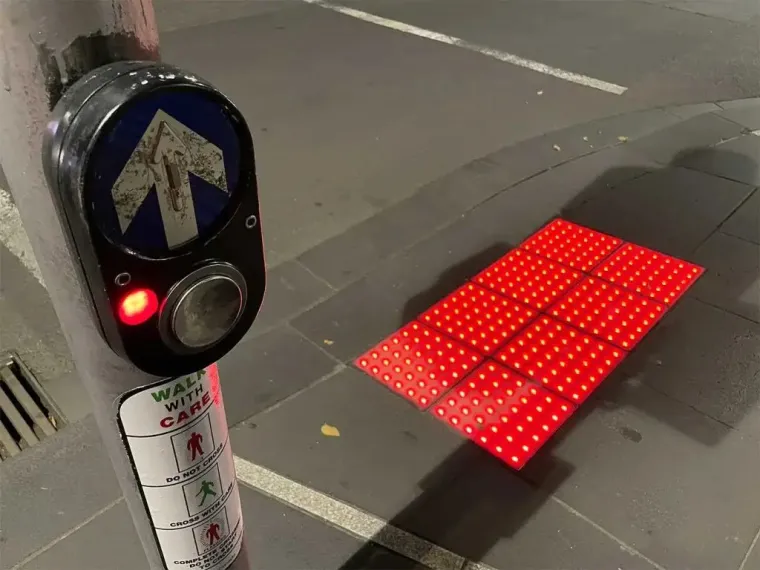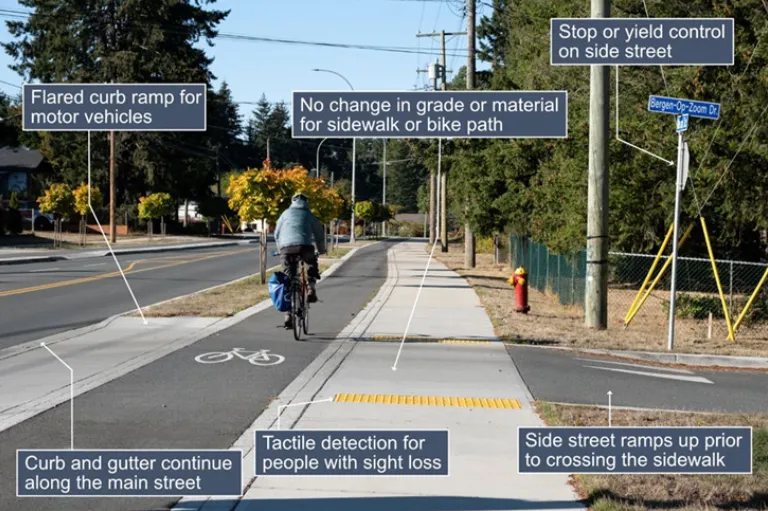The CACTI Blog: Car-Free Safety - How the University of Arizona Can Make Crosswalks Safer for Disabled Pedestrians

By Lexicon Espinoza, 2023-2024 Undergraduate Certificate In Developmental Disabilities
On the University of Arizona campus, it is easier to get around as a pedestrian than in a car. The campus has lower speed limits and more crosswalks than Tucson overall. This is good, but more is needed to make sure pedestrians are safe. Pedestrians with disabilities face even more disadvantages making it unsafe to walk around campus. Often, this is because city planners don’t consider disabled people’s needs unless they have to.
Pedestrian safety has always been important to me. My time as a trainee at the Sonoran Center has taught me that safe transportation in any form has barriers. These barriers limit how people can use it and who can use it.
Drivers do not always follow the lights, and make illegal or dangerous turns and moves that can put pedestrians in danger. I could do everything right as a pedestrian, but this still doesn’t mean I’ll always be safe. Drivers can be careless or make mistakes. This can harm me and other pedestrians, and it does.
Disabled people have historically been excluded from society through barriers. To this day, many of these barriers still exist. My time with the Sonoran Center gave me important knowledge and skills. Now, I use these to form the argument I am sharing now. I have researched and created several suggestions for how the University of Arizona can make crosswalks safer for pedestrians with disabilities.
My first suggestion is to add directional tactile warning strips to all crosswalks. These are the bumps that can be found on some crosswalks before the sidewalk ends. These are used to help people with no or low vision know where the crosswalk starts and ends. They also are meant to point people in the direction of the crosswalk on the other side of the road.

Unfortunately, many crosswalks do not have them, and the ones that do might not use them in the right way. Sometimes, a street corner has one ramp for either crosswalk to use. This makes it harder to avoid bumping into other people and knowing which way to face to cross the street safely. Tactile strips can be improved even more by adding lights that change color to match the crossing signal. Having bumps that glow red or green makes it easier to tell when it’s safe to cross without needing to hear, read words, or correctly interpret images.
My second suggestion is to change the crosswalk signals. This should happen in four ways at the same time:
Crosswalks should have accessible pedestrian signals (APIs). APIs use both images and sounds to tell people when it is safe to cross the street.
All crosswalks should be automatic. Some pedestrian lights need a person to push a button before the light changes. This means that someone who can’t push the button won’t be able to cross the street safely unless someone else pushes it for them.
Crosswalk signals should last much longer. Some crosswalk signals switch from ‘walk’ to ‘don’t cross’ too fast for large groups or people who can’t move as fast.
Crosswalks should at least be put at every light. If every light has an automatic crosswalk that gives signals that are heard and seen and last a long time, no one has to worry about making sure they know when to cross the street safely.
My third suggestion is to make the crosswalk accessible to all. A crosswalk needs to be wide enough for all the people who want to cross the street, their things, and the tools they might use to walk safely. This includes shopping bags, friends, pets, and mobility aids like wheelchairs and canes. Crosswalks can be improved by making the sidewalk and crosswalk the same height. This can be done by raising the crosswalk to meet the sidewalk height instead of using a ramp to go down to the road’s height, resulting in a continuous sidewalk. This is safer for people who use wheelchairs and little people because they are now taller and more visible to nearby cars. This is also safer for people with low or no vision because they can feel the difference between the crosswalk and the road better. This is also safer for pedestrians as a whole because cars driving over a raised crosswalk have to slow down more. Slower cars mean less harm to everyone involved in an accident.

The Americans with Disabilities Act (ADA) of 1990 says that disabled people have the right to easily access all public and private spaces. This means that disabled people need to have equal access to crosswalks. The issue is that the ADA has not been updated enough. The original ideas for what accessibility means haven’t caught up to current ideas. Some places across the world have started using some of the improvements I discussed here. Unfortunately, people with disabilities are still often left out of conversations about city design, planning, and policy.
The Arizona Board of Regents are people who help manage the universities in Arizona. They can push for changes on campus. They have an online contact page. Here, people can submit requests, questions, and comments. This is one place where anyone who wants to ask for any of the changes I explained above can go. More requests will show the Board that people want these changes.
References
Arizona Board of Regents. (n.d.). Contact us. Contact Us | Arizona Board of Regents.
https://www.azregents.edu/contact-us
Morris, J. (2023, January 31). Innovative Sidewalk Feature Spotted in Australia Improves
Accessibility. Wheelchair Travel.
https://wheelchairtravel.org/lighted-crosswalk-pavers-improve-accessibility-safety-melbourne/
Morris, J. (2024, January 11). 3 Ways to Make Streets & Sidewalks Safer for Wheelchair
Users. Wheelchair Travel.
https://wheelchairtravel.org/3-ways-make-streets-sidewalks-safer-wheelchair-users/
Stanley, C., & Davidson, B. (2023, October 17). Safer signals for Which Users?
Advocating for Accessible Pedestrian Signals. America Walks.
https://americawalks.org/safer-signals-for-which-users-accessible-pedestrian-signals/
Symons, R. (2023, July). Continuous Sidewalks and Bike Paths. TAC-ATC.
https://www.tac-atc.ca/en/publications/epb-csbp-e
Vadakpat, G., Smith, S. F., Rubinstein, Z. B., & Dias, M. B. (2021). Technology to make
signalized intersections safer for pedestrians with disabilities. Public Roads, 84(4).
Retrieved April 3, 2024, from
The CACTI Blog features the voices of our interdisciplinary trainees and Community Advisory Council members as they highlight diverse images of people with disabilities and provide community information and advocacy on disability issues. Check Out The CACTI Blog
